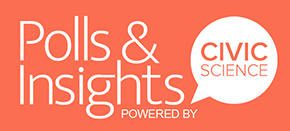In a recent survey conducted by CivicScience, a striking disparity emerged between eReader owners and non-owners in the United States. From January 1 to May 16, 2025, 43,791 U.S. users participated in this survey, revealing that 23% of respondents own an eReader, while a significant 77% do not. This data sheds light on the demographic and socioeconomic factors influencing eReader ownership.
Income plays a pivotal role in e-reader ownership. Among those who own an eReader, 18% earn between $100,000 and $149,999, compared to just 13% of non-owners in the same income bracket. This trend continues with higher income levels, where 9% of eReader owners earn between $150,000 and $199,999, while only 7% of non-owners fall into this category. Conversely, 24% of non-owners earn less than $30,000, compared to 15% of eReader owners, highlighting a clear income divide.
Education also emerges as a significant factor. A notable 25% of eReader owners hold a Bachelor’s degree, compared to 19% of non-owners. Furthermore, 18% of eReader owners possess a graduate or professional degree, while only 13% of non-owners have achieved this level of education. This suggests that higher educational attainment correlates with eReader ownership.
Gender differences are also evident. Among eReader owners, 57% are female, whereas non-owners have an even gender split. This indicates a higher inclination for women to own eReaders compared to men.
Age demographics reveal that older individuals are more likely to own eReaders. Among eReader owners, 22% are aged 65 or older, compared to 19% of non-owners. This trend suggests that older age groups may find eReaders more appealing or accessible.
Urbanicity also plays a role in eReader ownership. A higher percentage of eReader owners, 43%, reside in suburban areas, compared to 40% of non-owners. In contrast, 29% of non-owners live in rural areas, while only 26% of eReader owners do. This indicates a suburban preference among eReader owners.
Parental status further distinguishes eReader owners from non-owners. Among eReader owners, 26% are grandparents, compared to 23% of non-owners. Additionally, 42% of eReader owners are parents, slightly higher than the 39% of non-owners who are parents. This suggests that family dynamics may influence eReader ownership.
Overall, the survey highlights significant distinctions between eReader owners and non-owners, with income, education, gender, age, urbanicity, and parental status all playing crucial roles. These findings provide valuable insights into the demographics and preferences of eReader users in the United States.
This article’s data comes solely from CivicScience’s database, which contains nearly 700,000 poll questions and 5 billion consumer insights. Our AI content creation tool, DataScribe, supported the article.

